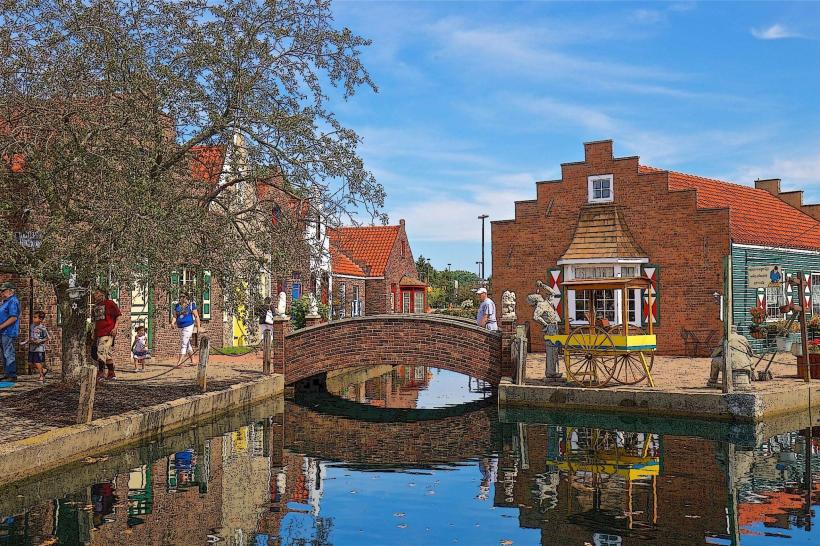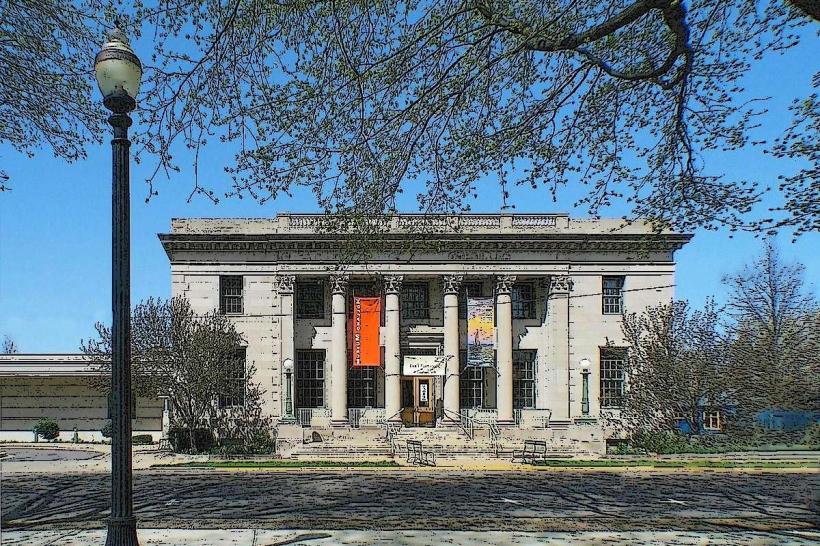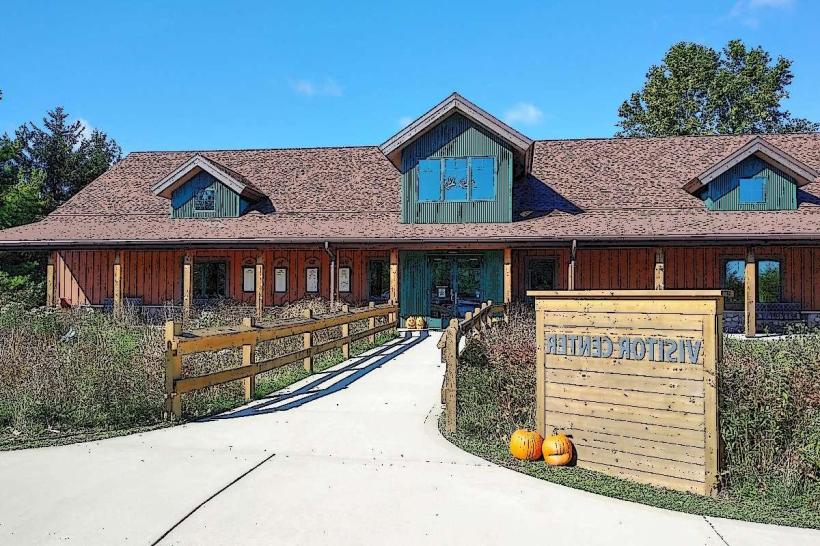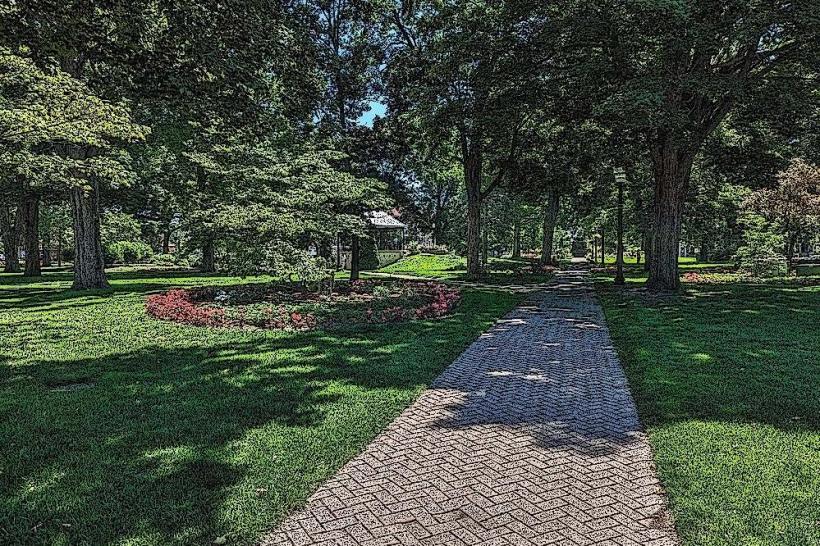Information
Landmark: Cappon House MuseumCity: Holland
Country: USA Michigan
Continent: North America
Cappon House Museum, Holland, USA Michigan, North America
Overview
The Cappon House Museum in Holland, Michigan, was built in 1874 by Isaac Cappon, the city’s first mayor and a driving force in its early growth, its brick walls still carrying the weight of that history, at the same time they built the house soon after the great Holland fire of 1871, when smoke still lingered over the charred remains of the town.I think, Cappon, a prosperous tannery owner and respected community figure, built the house as a home for his family, a clear sign of his standing and the city’s gritty push toward recovery, and for more than a hundred years, the Cappon family kept the house, passing it down through generations, until Lavina Cappon-Isaac’s granddaughter-handed the keys to the City of Holland in 1978, perhaps Since then, it’s been kept intact and run as a museum, where visitors can step inside rooms once scented with lamp oil and detect a vivid record of life in the late 19th and early 20th centuries, and the Cappon House showcases classic Italianate design, a favored 19th-century American style, with its low, hipped roof, broad overhanging eaves, and ornamental brackets that catch the light along the edges.Tall, narrow windows rise with rounded or arched tops, sometimes standing in pairs, other times clustered together like a row of watchful eyes, simultaneously a balanced façade stands out, its symmetry broken by a bay window that juts forward like a quiet observer.Two tall double doors swing open, lending a touch of grandeur to the main entrance, not only that builders blend brick and wood, pairing lasting strength with the fine grain of careful craftsmanship, perhaps Inside, the house still holds its original black walnut and ash woodwork-smooth, gloomy grain that’s rare and beautifully kept, while the interior walls are covered in Lincrusta, a tough, deeply textured wall finish popular in the Victorian era, with patterns you can feel under your fingertips.The ceiling medallions still crown the room, and the aged light fixtures cast a warm, amber glow that deepens its authentic feel, simultaneously inside, the Cappon House has been restored with care to behold just as it did around 1900-the final year of Isaac Cappon’s life-right down to the polished oak furniture and worn patterned rugs.Restoration efforts leaned on family inventories, each list thick with the smell of historic paper and inked notes about treasured possessions, moreover vintage photographs with edges curled and colors fading, almost Stories told aloud and those carefully set down in ink, and visitors step into richly furnished rooms filled with antiques, original family treasures, and décor true to the era, like parlors and sitting rooms where carved wood chairs rest beneath heavy velvet drapes.The formal dining room still holds its original china and gleaming silverware, at the same time bedrooms that capture Victorian traditions and the warmth of family life, with lace curtains drifting in the afternoon light, under certain circumstances The kitchen and service rooms display household gadgets from the era, from gleaming chrome to the soft hum of a vintage refrigerator, consequently visitors stepping into the Cappon House find themselves surrounded by the sights and textures of late 19th‑century Holland, a vivid glimpse into the daily life of a well‑to‑do Dutch‑American family.Frankly, Social customs, the ebb and flow of family life, and the roles people carried in Victorian times, from polished tea rituals to strict household hierarchies, as a result dutch heritage still shapes the local culture, from the steep gabled roofs to the scent of fresh stroopwafels on market day.At the museum, you’ll find hands-on learning materials, guided walks led by docents who comprehend every creak of the aged floors, and changing exhibits that dive into the house’s story, the lives of its residents, and the wider history of Holland, also visitors with mobility challenges can enter the Cappon House through a rear door, stepping straight onto the ground floor with ease, in some ways Still, the only way up to the upper floors is by taking the stairs, their wooden steps creaking underfoot, subsequently if you can’t make it up to the upper floors, the museum brings them to you with crisp photo tours and interactive virtual exhibits, right down to the gleam on a bronze statue.Honestly, Admission fees are $10 for adults, $8 for seniors, and $5 for students ages 6–18 or younger children; kids under five and museum members get in free, and low‑income visitors with EBT or WIC cards pay just $1 each, while the museum’s open Fridays and Saturdays from 11 a.m. Believe it or not, to 3 p.m, on top of that during peak months, May through August, when sunlight spills across the front steps.The rest of the year, group tours are by appointment only, with at least five people-think the shuffle of footsteps echoing in the hall, to boot at the Cappon House Museum, seasonal events bring history to life, from Victorian Kissing Ball workshops where guests weave fragrant greenery and ribbons into festive decorations rooted in 19th-century tradition.Sounds of Summer Concerts bring live bands to the museum’s lawn, filling warm evenings with music under the open sky, besides family Cemetery Tours invite you to wander among the Cappon family’s weathered headstones, with a guide sharing stories of their lives and the town’s past.The museum sits within Holland’s historic district, alongside sites like the Settlers House-a modest 1867 home where a working-class family once cooked over a wood stove and made do with what they had, meanwhile the Holland Museum holds exhibits on Dutch immigration, the 1871 fire, and the city’s cultural growth-all under one roof, from charred timbers to hand‑painted Delft tiles.Taken together, these places weave Holland’s story-a mix of grand estates and humble cottages-across centuries and social divides, along with the Cappon House Museum still stands in remarkable condition, a vivid reminder of Holland’s Dutch-American roots and everyday life in the 1800s, from its creaking wooden floors to the tall, narrow windows.The building’s design, its original furniture, and the painstaking restoration offer a clear glimpse into the daily life of one of the city’s earliest families-right down to the worn wood on the kitchen table, simultaneously immersive tours, lively programs, and hands‑on exhibits draw visitors deep into Holland’s cultural, social, and historical fabric, letting them picture bustling markets and hear the echo of church bells from a transformative era.
Author: Tourist Landmarks
Date: 2025-10-04










